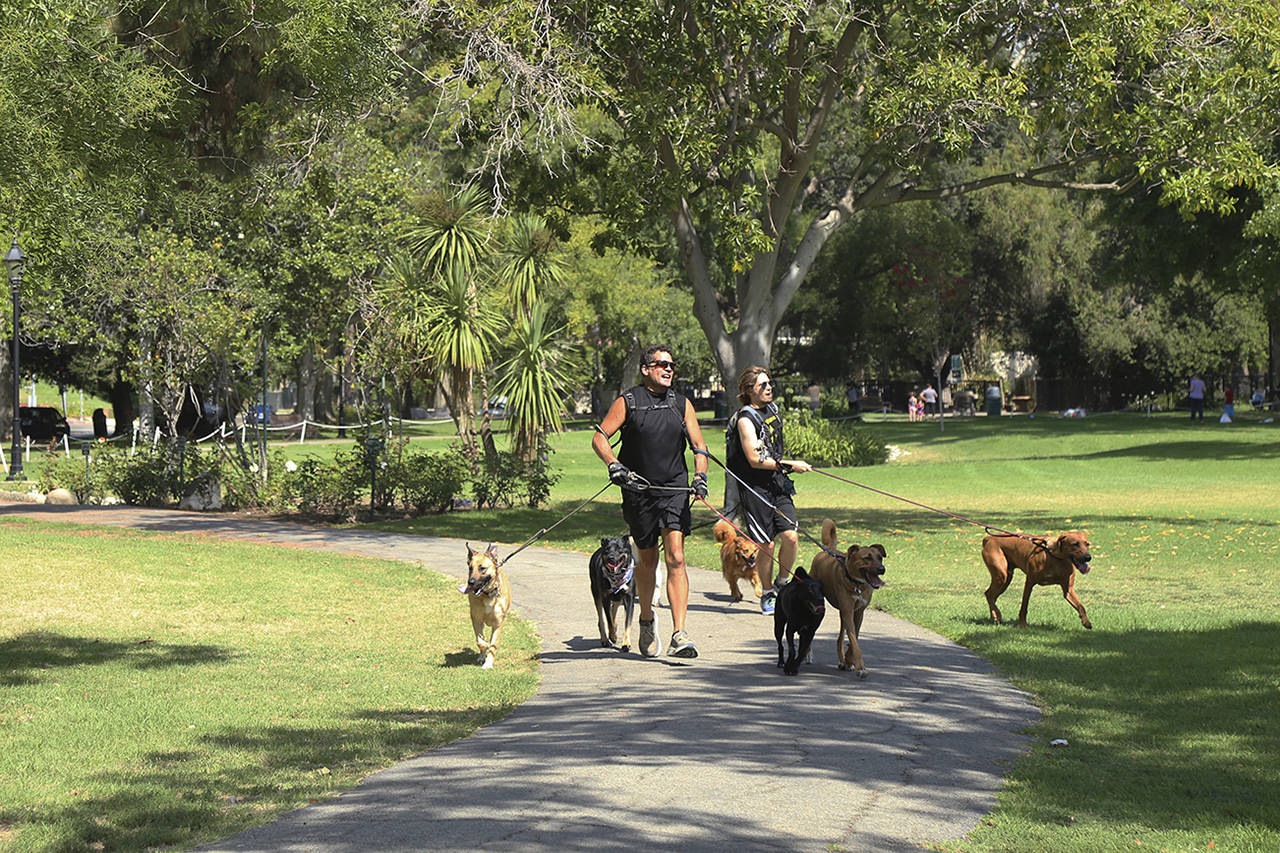By Rene Lynch
Los Angeles Times
Next time you’re at the vet, you need to look your vet in the eye and say: “Doc, give it to me straight. Is my pet fat?”
And then don’t freak out if the answer is “Yes, I’m glad you mentioned that, I’ve been meaning to tell you…”
It’s estimated that as many as 59 percent of the nation’s cats and 54 percent of its dogs are struggling with obesity, according to veterinarian Ernie Ward, founder of the Assn. for Pet Obesity Prevention and author of the book “Chow Hounds: Why Our Dogs Are Getting Fatter.”
“We actually think the numbers are higher,” Ward said, and that vets are underreporting and sidestepping the problem lest they risk offending clients.
Pudgy pugs and fat cats may get lots of “likes” on social media, but there’s nothing amusing about pet obesity, which can dramatically shorten a pet’s life by contributing to crippling arthritis, Type 2 diabetes, high blood pressure, kidney failure and a variety of cancers.
If you love your pet, “one the most important things you can do is keep your pet at a healthy weight,” Ward said.
The first step is having a frank discussion with your vet and figuring out an appropriate plan for feeding your pet and doling out the right amount of treats. (There’s no way we’re going to stop giving our pets treats!)
Next up, though, is the fun part: exercising with your pet to burn off calories and pent-up energy, and bringing out its inner wild child. Here are Ward’s tips:
IF YOU HAVE A CAT
“Cats don’t ‘jog’ — they are built for short spurts of energy that unleash their inner predator,” he said. Think nature documentaries, where the cheetah goes full-out to capture its prey and then spends the rest of the afternoon snoozing and recharging.
Ward suggests using laser pointers and remote-control toys to drive your cat insane for three to five minutes of play at a time, working up to three or four sessions a day for a total of about 20 minutes of play.
In addition, he suggests placing a few boxes around the house and other toys your cat can use to hide in and leap out at you as you are walking by.
Ward also plays “hide the food” with his cats, placing some of their food in little bowls and secreting them around the house each day. It’s kitty’s job to find them.
“They get to kind of stalk their ‘prey’” and burn off some calories in the process, he said.
IF YOU HAVE A DOG
In contrast to cats, dogs need longer workouts to help them reset their energy levels, Ward said.
This does not mean you should take a dog that has been a couch potato and try to make it run five miles behind your bike. “That is a recipe for disaster,” he said.
Instead, aim to condition your dog (and yourself) by working your way up to a brisk 30 minutes of walking each day, or two 15-minute walks. Start out with leisurely walks of about 10 minutes apiece, and increase time and intensity by about 10 percent each week until you hit your goal.
If you don’t have the time, consider hiring a dog walker or a college kid or a neighbor who could use a four-legged walking buddy. Doggie day care services are helpful too.
You also want to get in some ball playing or Frisbee time with your dog, so it can get in a little harder running and jumping if its health allows, Ward said.


